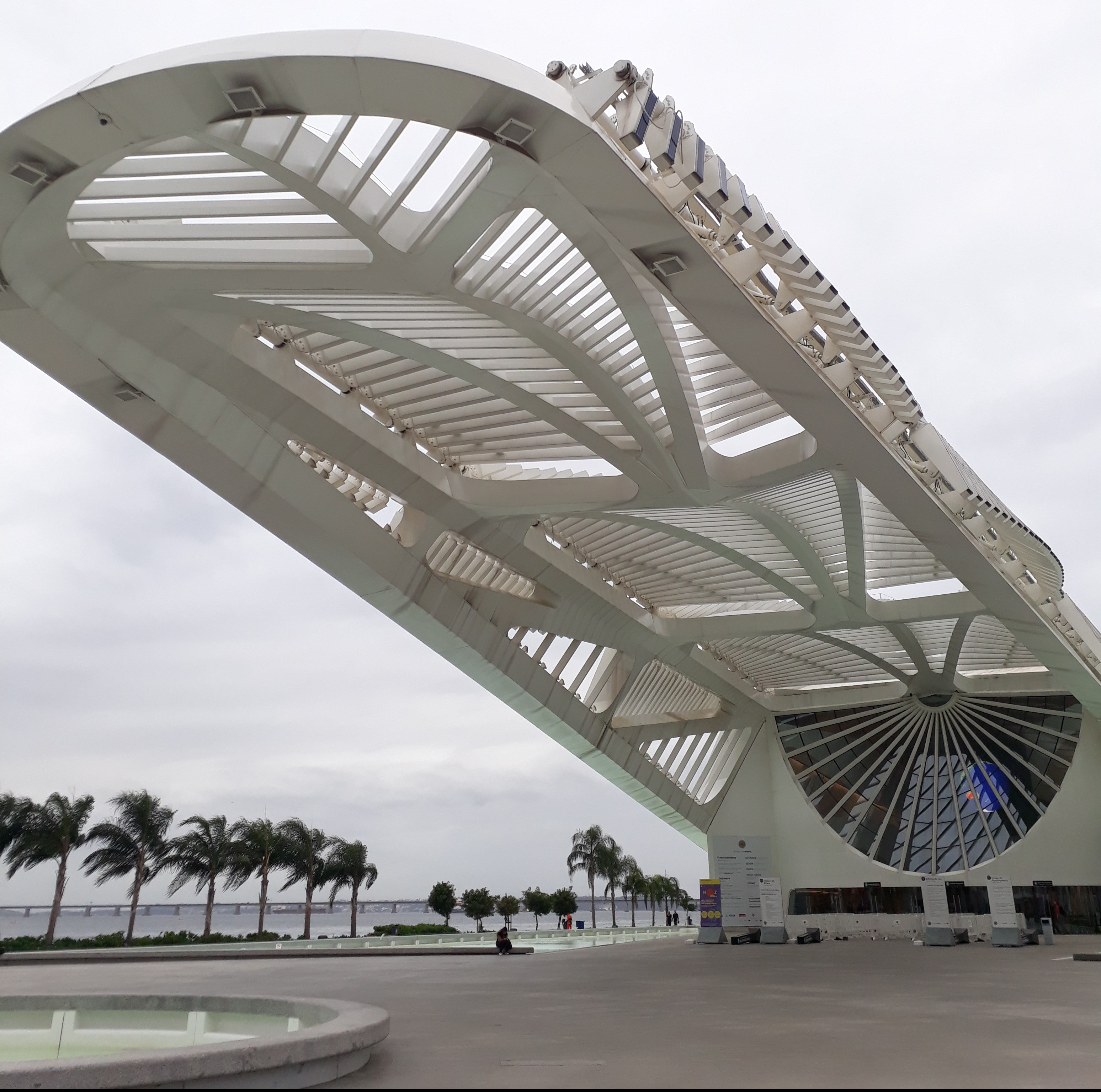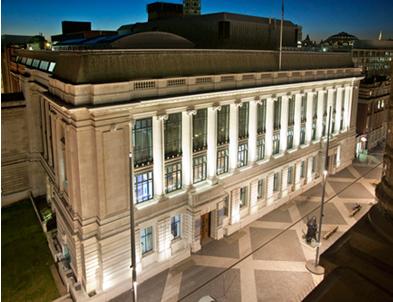I went with the purpose of sharing the research around science capital and learning more about their education initiatives. I learnt a lot whilst I was there, and the visit helped me to reflect on museums in the UK.
The Museum of Tomorrow opened in 2015 and is a visually impressive building. It is huge and white, with massive solar panels that move according to the position of the sun. One side faces the waters of Guanabara Bay and it looks a little bit like a spaceship. I have been reliably informed that it is the most Instagrammed site in Rio. The local area of the Museum is steeped in history, but it is also in a region of poverty and favelas (Portuguese for ‘slum’). The hope is that by building a museum the area will be regenerated, but there is also a fear that this regeneration will alienate the local communities, in part due to the Museum’s intimidating architecture.

The lead curator of the Museum, Luiz Oliveira, told me that they wanted the Museum to be something spectacular, to take the visitor out of themselves. However, like so many of our museums in the UK, this grand architecture can be both inspiring and intimidating; depending on your point of view. This seeming tension between stunning architectural design and creating a welcoming environment that visitors feel at home in, gave me pause to reflect on the science capital research and how it might help.
To some extent Luiz is right, it can be good to provide visitors with an experience that is memorable and unlike their day to day routine of work, school and home. However, the research we have participated in around science capital shows that for some visitors’ museums and their environments can be intimidating and a real deterrent to engagement. For example, a family who participated in our Building Bridges project clearly struggled to feel that the Science Museum was a place for them, saying that, ‘the area is really wealthy. I remember these huge white houses… it’s really different to other places in London or here where the school is… It’s just not somewhere I think I’d feel very comfortable’. So how can we balance spectacle and familiarity, inspiration and intimidation?

We must not forget to reflect on our environments and our visual language and try and see them through our visitors’ eyes. We need to provide a warm welcome and create an atmosphere which helps the visitor feel confident and a sense of ownership. It is about having friendly staff who smile as you walk in, signage that helps you know the ‘rules of the game’, for example what you can and can’t touch, or where the toilets and places to eat are; in short signage that helps you feel comfortable in an unfamiliar environment. It is about understanding that some visitors need more of a helping hand.
The Museum of Tomorrow are aware of the intimidating nature of their building and will occasionally send members of museum staff to a school to accompany teachers and children on their visit. In a sense they are approaching visitors in their own familiar environment (the school) and then travelling with them to an unfamiliar environment (the museum). Beyond these direct interventions, having a welcoming website can really encourage visitors to engage with the museum in their home and equip them with the information and confidence to make a visit of their own. I quite like this one from the Thackray Medical Museum in Leeds; it is one of the few I looked at that started by explicitly welcoming visitors and makes references to ‘you and your family’.
Ultimately having a visually impressive building should not be a negative, however we need to be mindful of the effect that museum environments can have on all our visitors and strive to find ways to help those who need it feel welcome, confident and at home.
What are the first impressions visitors have of your museum? What do you do to help your visitors feel welcome?